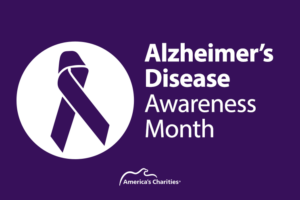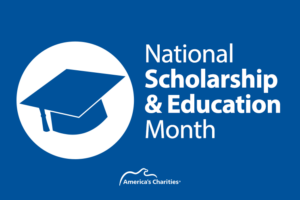America's Charities | April 16, 2019
Despite Longest U.S. Government Shutdown in History, the CFC Marches On
Dear Nonprofit Partners,
On January 14, I reached out to you with an update regarding the Combined Federal Campaign (CFC), the workplace giving program for current and retired federal and military personnel. At that time, we were on day 24 of a partial government shutdown that wound up lasting 35 days – the longest shutdown in our nation’s history – during which 800,000 federal employees were furloughed or expected to work without pay. Throughout the shutdown, the entire team at America’s Charities joined in a renewed effort to advocate to key stakeholders in this program. This included communicating directly with the U.S. Office of Personnel Management (OPM), making clear our position on extending the campaign solicitation period, and offering our assistance to administrative and marketing representatives of local campaigns throughout the country. We reached out to members of the press, culminating with our contribution to a column in The Washington Post. We also amplified our digital marketing efforts speaking to the importance of the program and its real-world impact on constituents in need of support. Our outreach included targeted messaging to our wider audience about ways our nonprofits were helping federal workers.
We did all of this knowing that the 2018-19 government shutdown would still affect the CFC, just not how much. We now have heard from the campaign and while disappointed in the final pledge results, we are pleasantly surprised the impact of the shutdown wasn’t as harmful as it could have been.
As a refresher, the 2018 CFC program kicked off on September 10, 2018, and was set to end on January 11, 2019. The shutdown began on December 22 and wrapped on January 25. Once all federal employees were back at work, the Acting Director of OPM authorized a special extension of the solicitation period through February 22.
Despite mammoth interruption during the heart of the giving season, CFC donors raised a total of $90.2 million in pledges, only 10% less than the $101 million raised the year prior. While we are disappointed in the overall decrease, we can largely contribute it to the federal government shutdown; before the shutdown in December, the 2018 CFC was tracking an increase of 10% from the year prior – that represents strong momentum that was effectively stalled by the shutdown. This gives us confidence that everything is properly in place to help this campaign rebound.
There is also positive news to share regarding CFC performance for America’s Charities members. While there was an overall pledge decline of 10.7% for all participating nonprofits in the CFC, our members fared significantly better, with an average decrease of only 5.6%. In fact, a number of our members saw a significant pledge increase from the prior year, some as much as 240%. Finally, the number and quality of CFC events nearly doubled and our team worked overtime in prescreening and standardizing invitations for our members all across the country.
It is clear now that the most positive indicator of the CFC’s future is the generosity of our public servants. We are humbly reminded that these are everyday people who are still interested in supporting nonprofits and their communities, even when they themselves are in time of hardship.
What is more, we have seen what happens when we reward their generosity with our continued support. Critics have had much to say about the CFC the past few years; we have seen some go so far as to speculate its imminent demise. What they fail to realize is that the more we emphasize the shortcomings of this program without offering solutions, the less chance we all have for its success. When considering all of the evidence before us, the CFC is valuable. It is not going away. What we have is a program finding its footing in the aftermath of significant change. We have reported previously on these changes, all of which stem from a new set of regulations that went into effect beginning with the 2017 campaign.
Along with these changes came growing pains, as well as an opportunity to self-correct. The stakeholders most invested in this program did just that. After 2017’s unprecedented pledge decline, the OPM sought input from federal workers and other campaign stakeholders to ensure the new rules would better assist nonprofits and engage public sector employees. This was a step in the right direction and the OPM helped remedy the majority of difficulties faced in the prior year because of the suggestions and feedback from nonprofits, Local Federal Coordinating Committee (LFCC) leadership, and Outreach Coordinators (OCs), particularly those OCs responsible for managing high impact areas of the country.
Since President John F. Kennedy founded the program in 1961, the CFC has remained one of the largest workplace giving programs in the world, generating more than $350 million for worthy nonprofits in the last three years alone. The program now has a donor base of 9.9 million active and retired employees, providing current and former public servants the opportunity to donate to the charities of their choice through payroll deduction, credit card, and electronic check. Perhaps the most significant area of recent growth is in retiree giving; donations from retirees tripled in 2018.
We knew that a complete recovery from 2017 was not feasible and that it would take time for the program to rebuild its momentum. The 2018 campaign was a step in the right direction, and we anticipate it will take more time for a complete turnaround. As we’ve stated, the CFC instituted a number of changes beginning with the 2017 campaign with the intention of making the program more cost-efficient. Unfortunately, the recent decline in donations, decline in participation, and the upfront cost of implementing new infrastructure has translated to a proportionate administrative cost. The cost of running the campaign is shared by all participating organizations; some of it is assessed upfront and some at time of distribution. In 2017, the CFC assessed a distribution fee of 16.5%. We are waiting to officially hear the distribution fee for 2018. Regardless, we know there are always costs associated with fundraising and that time after time, workplace giving tends to be the most cost-efficient form of charitable giving. We are confident that the overall cost of CFC participation will decrease with time, as new processes are standardized and charges for implementation of a new giving platform and other structural changes taper off.
The bottom line is that in spite of all challenges they faced, federal workers managed to pledge $90.2 million for nonprofits. For federal employees to engender so much generosity in a time when they were facing hardship underscores their altruism more than ever.
Critics will say our government is the epicenter of ideological divide and there is a great deal of discord in the world around us. At America’s Charities, we see the opposite every day. People are making deliberate choices to change our world for the better and they are doing it through workplace giving programs. In this specific circumstance, federal workers are making real, lasting change through the CFC.
We will be back in touch with more updates as this progresses. In the meantime, please do not hesitate to contact us with questions at clientsolutions@charities.org.
Sincerely,
Jim Starr
President and CEO
Get Resources and Insights Straight To Your Inbox
Explore More Articles
Open Position: Customer Service Coordinator (Remote-Part Time)
Position Title: Customer Service Coordinator (Remote – Part Time) Department: Charitable Funds Management Solutions We are a non-profit charitable organization looking for skilled individuals who…
Read ArticleGet Resources and Insights Straight To Your Inbox
Receive our monthly/bi-monthly newsletter filled with information about causes, nonprofit impact, and topics important for corporate social responsibility and employee engagement professionals, including disaster response, workplace giving, matching gifts, employee assistance funds, volunteering, scholarship award program management, grantmaking, and other philanthropic initiatives.





